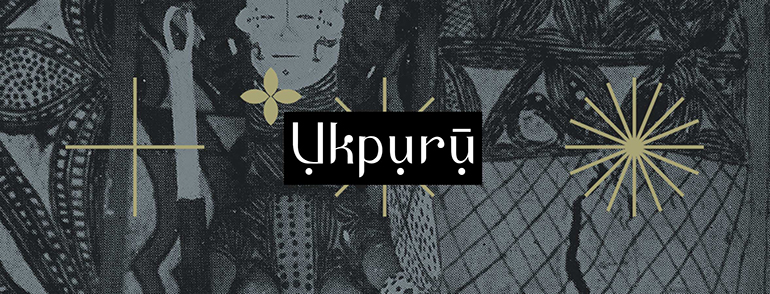
An mgburuichi, an Igbo person with ichi marks associated with Nri. Northcote Thomas, Museum of Archaeology and Anthropology, Cambridge. Igbo people were the largest group among people who had escaped enslavement on plantations in Jamaica, mgburuichi were known as 'Bruchee.'
"They were respected throughout Igboland. We have facial marks (ichi) that distinguish us from other Igbo people, and this served as a passport, enabling us to travel unharmed at a time when human beings were essential commodities. People with ichi marks were regarded as Nri men, and were not enslaved. It was probably because of this that some parts of Igboland started to wear ichi."
 A 'runaway' advertisement from Jamaica, requesting the capture of escaped enslaved people for a reward in return, noted is an "Eboe man, with the Breeche cut on his forehead," this is an mgburuichi, an Igbo man with ichi marks likely from today's Anambra State. From a compilation of 18th century advertisements for escaped enslaved people in Jamaica. There are over 100 Igbo (Eboe) people listed.
A 'runaway' advertisement from Jamaica, requesting the capture of escaped enslaved people for a reward in return, noted is an "Eboe man, with the Breeche cut on his forehead," this is an mgburuichi, an Igbo man with ichi marks likely from today's Anambra State. From a compilation of 18th century advertisements for escaped enslaved people in Jamaica. There are over 100 Igbo (Eboe) people listed.
The fact that Igbo "Breechee" show up in Jamaica among runaways from 1777-1793 is significant. It is a concrete sign that the trans-Atlantic slave trade had reached all the way to the Nri heartland in the Anambra valley of northern Igboland, and that by the 1770s (if not earlier) the social violence wrought by slaving and the agawhu (merchant-warlords) was violating even the ancient sacred authority—and the personal safety—of titled "Nri men," who no longer were preserved from capture or kidnapping and enslavement.– Douglas B. Chambers. "The Igbo Diaspora in the Era of the Slave Trade."

No comments:
Post a Comment